|
Saroj is the cook who works in our house. In India, almost everyone has a cook and/or cleaning lady. Without these amazing people, we just wouldn’t be able to function. Days the ‘bai’ doesn’t come resemble the apocalypse. Dishes pile up, the floor looks dusty, everyone eats leftovers or pizza, and chaos reigns. Saroj is around thirty years old, and has three daughters. The eldest is fifteen years old. So yes, she got married well before eighteen. Conversations with Saroj reveal several bitter truths about Indian society, which the rest of us ‘privileged’ lot conveniently ignore.
Poverty forces most of these people into early employment (employment=menial tasks, labour, housework). Saroj is an intelligent, ambitious person. But she is the eldest of four siblings. Her own mother was married at twelve, in her village. Since her father was a useless drunk who took his wife’s income and beat her and the children, her mother decided it would be best to get her children married off at an early age. Though Saroj was keen on studying and making something of her life, she didn’t have a say in the matter. After marriage, she had three children. Why? This is where it gets interesting. Like many, many Indians, she was hoping for a boy child. This terrible desire for a male child seems hard-wired in many Indians, despite the ruin it wrecks. It cuts across economic backgrounds, religions, and geographical areas. It’s one of the great levelers of Indian society. Fortunately, Saroj’s husband was sensible, and realised three was quite enough, thank you. He feels that a girl is as valuable as a boy. But Saroj’s relatives, and even other maids in our building, talk to her with great pity. “Oh, you have three daughters?” Significant pause. “No sons?” They make it a point to ask this ‘no sons’ question, as if Saroj is inflicted with some incurable disease. Seen from their point of view, she is diseased, because she’s already worried about how she will get her daughters married and produce a dowry for each of them. Here’s one of the many conversations I have with her. Armeen: Let your daughters study. They can get decent jobs later. Saroj (smiling): Yes, I want them too. What I couldn’t achieve, they will. A: Don’t get them married very young to just anyone. Many men ill-treat their wives. So be careful. S: Yes. But didi, if they study too much. Then we won’t find boys for them. Our boys don’t study that much. Twelfth pass at the most. If the girls are graduates, then they won’t find husbands. A (still trying): Ok. But let them study. They can still get married. Everyone has to change to make things better. S: That’s why people like having boys. Girls are a big load. My sister-in-law has had three abortions when she got to know she was expecting girls. She has five daughters and they want a son. A: Three abortions? That’s very dangerous for her health. It’s illegal for a doctor to disclose the sex of an unborn child. S: Yes, it’s illegal. But there are doctors who do it. There’s a clinic in Surat which does just this. Many people go there, get tested and come back. It’s famous. A: So many of your men beat their wives daily, abuse their children and make their lives hell. You complain about your own father and brother all the time. Why are you all so obsessed with having sons? S. What to do, didi? That’s the way thing are in our community. I will have to look for grooms among my community people. If my daughters study too much, it will be a big problem. We can’t look in other communities. People think boys are a blessing. But often they are just a headache. A: Look, now the world is changing. Girls are doing a lot, as much as boys. Let your girls become something. If they work they will be better off in life. S: Yes, that’s true. But they can’t be better off than their husbands. That will be a problem. A: If you want things to change for them, then you have to start changing. S: Yes I know. But what’s the use. Only one person can’t change. Everyone has to change. A: (gives up) S (grinning with great pride): But my girls speak English. They will do something. I'm worried about their college. Boys will harass them in college, and on the bus. A: We all faced that. They will learn to handle it. (Although these days the level of harassment has reached something else. But we can't all sit at home because some 'boys' will harass us, right?) So that’s what it comes to. She doesn’t believe that changing her thinking or practices will have any positive affect. She’s waiting for the rest of her community to take the first step. And the rest of them are waiting for someone else to change. It’s very hard to alter mindsets. There's no easy solution to this. Her girls are the only hope. They’ve gone to school. The eldest will start college next year. Hopefully, they think different. However, that may not be enough. They will have to be supremely strong to put their foot down to go against the grain, if they want to work. They will have to disregard the enormous pressure on them to get married, and produce yet another boy.
0 Comments
Phew! It’s been a hot summer in more ways than one. Besides slurping mangoes and sweating buckets, we Indians actually came out in droves and voted.
We often feel that we are a divided country. We’re just too big, too populated, and too diverse to actually feel like one nation. But this time there was something common amongst all Indians, across the length and breadth of the land. We were all totally fed up with our last Government. Everyone unanimously felt that enough is enough. Now why we were so fed up is another story altogether (more than a story actually, it can form a series of books). But it was a new experience to see everyone throw their vote behind one man. Congress made desperate last-minute barbs by calling him ‘chaiwalla’, and referring to a 56 inch chest, but in the end they had to put their tail between their legs and run for cover, because the people of India gave them a good, solid, well-deserved kick. It feels great that they’ve been squashed (for the present at least), like that lazy, disgusting cockroach that lurks in the corner of your kitchen. Because of all this polly-tickle tamasha, one watches a lot of news these days. You can’t see a minute of news without hearing the name ‘Modi’. It’s the most used word after the phrase ‘India needs an answer’. If someone actually did a statistical tally, the word ‘modi’ would be occurring at the frequency of one per minute at a bare minimum, and even going up to twenty-seven per minute on a good day. Because even when people are not talking about Modi, they are talking about Modi. You can’t discuss anything without his name popping up. Government, corruption, dhoklas, Gujarat, Hindus, Muslims, kurtas, puppies, and everything connects to Modi somehow. You’ve got to hand it to the guy for become Brand No. 1. During the last six months or so, family/friends get-togethers could not proceed as normal. The room would be firmly divided into pro-Modi and anti-Modi factions. Everyone would be shouting their opinion without hearing anothers’. Each camp is firmly entrenched in its belief, and it’s impossible to budge them either way. There are spouses, siblings, parents and kids who don’t see eye-to-eye on this. But we forget an important thing. We have to thank the Congress party. Why? If they hadn’t put up a goofy like RaGa, who knows, they might have got a bigger majority, and would not be shaking in their shoes today. Imagine if they had a smart, shrewd, capable leader. It would be terrible, because they might continue in power for the next sixty years, reducing India to pulp. Their miserable governance actually united this country, which otherwise can’t agree on which MDH masala is best. As citizens of this great nation, there are several cards that are essential to our existence. Yes, you heard right—cards. These harmless little laminated pieces of paper, generously stamped by the Government and decorated with illegible signatures are our lifeblood. You aren’t truly an Indian until you have a bunch of these cards, squirrelled away somewhere.
Take that grand old patriarch of cards, known as the ‘ration card’. This has been around for decades. Are you likely to buy rice or dal at subsidised rates? I thought not. This little booklet doubles up as a proof of residence and practically a proof of citizenship, for when you need to acquire other cards and add them to your ever-growing collection. It is nearly impossible to get your own ration card. I was told by a helpful tout that my name must exist on my parent’s card, and it could only be transferred from there to a new card. Like blue blood, ration cards move from one generation to the next. Unlike blue blood, the transfer would come at a cost, said aforementioned tout, eyeing me greedily. Consider the humble driving license, another innocent looking thing. Traffic police threaten to confiscate it if you get caught. Friends double up laughing when they see your photograph on it. Thus, it provides power for some and entertainment for others. To attain a driver’s license you should know how to drive. That is the general assumption people make, and it is wrong. Is the ration card used for ration? No. In a similar manner, the license is not proof of your driving skills. Many people possessing driving licenses do not know how to park, and why should they, when the license has much more important functions? It acts as proof of your residence (again) and identity (inspite of the hilarious picture where you resemble a tomato) when you want to apply for Passport, PAN card, Election card, open a bank account, close a bank account, board a domestic flight, prove your identity to a train ticket collector, and so on. So once I was the proud owner of a driving license I decided to put my license to better use. I would get my Voter ID card, or Election card, or whatever they call the blasted thing these days. This is a precious one. If you possess it, hang on to it. At this time of year everyone is turning his or her cupboard and wallet upside down hunting it down. First-time voters like myself are trudging miles in the heat trying to track down where their card is. This is the card that connects you and me, normal, unimportant people, to the Prime Minister himself (or herself). This card can change our future (or so we believe). This card will improve our lives (that’s what we tell ourselves). My spouse and I are running from pillar to post, but the card is a coy damsel, dodging us at every turn. Still, we have to thank it for getting us into shape with all that chasing, as well as developing our Buddha-like patience. Let’s not hurt the sentiments of numerous other Indian cards by ignoring them. The PAN card is the easiest, friendliest one of the lot. The Gas Cylinder Card is again a very important creature in the card ecosystem. Housewives value it more than oxygen, and with good reason. For who even breathes real oxygen these days, with all the pollution around us? LPG gas is something we can’t live without, for our rozi roti depends on it. Have you seen a household without a gas cylinder? It’s usually falling apart in chaos. For a short while the Gas Card was hitched with that new kid on the block, the Aadhar Card. This made us all run around like headless chickens. But now that the two cards have got divorced, we’re all breathing easy again. I hear you ask, why was I seeking a ration card to begin with? Well, let me explain. To provide proof of residence for my learner’s license, which would lead to the driver’s license, which could be used as proof to get an Election Card, which I could vote with to change the government which has created this system, and usher in a new government with their own new crazy system for us to adjust to all over again. The last few months have been particularly adrenaline-pumping. I finally learnt to drive. Forget bungee-jumping, driving is the best way to keep all senses on high alert. I went to a driving school for a few weeks. Then I took our own Maruti 800 for a spin. All went well till I tried to park it back in its stable. I drove into a wall. Although it was slow, and the faithful steed was unhurt, it is slightly traumatic to be responsible for such things. So, I took a few extra driving classes from one of the instructors of the driving school. To protect his identity (since he is not supposed to take extra classes independently) we will call him Mr G.
Mr. G is a saint among the driving teachers of the world. Teaching is truly an art, and he has mastered it. Ironically, when he drives the car himself, he is quite rash. But when he teaches, he calms the nerves and unruffles ruffled feathers. Nothing fazes him, and his patience knows no limits. Golden words he frequently repeats while driving are: "Aaram se jaao. Sabko jaane do." When you're learning driving, you need to hear this every five minutes. "Brake frequently, accelerate occasionally." Opposite of most of the population. It's completely fine to fall back in traffic and let everyone overtake. They're in such a crashing hurry, yet they will be next to you again at the next signal. "Left lane mein raho." Let all the honking Audis and screeching Sumos whiz past unhindered. Of course sometimes, the left lane is very perilous. There will be numerous cyclists and two-wheelers flitting about like annoying mosquitos, there will be massive vehicles coming full-speed on the wrong side of the road. And they will glare at you as if you are wrong. "Clutch ko pyaar se chodna." Now if you've never driven a Maruti 800, you have no idea how sensitive a clutch can be. It's a temperamental damsel. Leave it too quickly, and it will just ditch you completely, make the engine die, and leave you frantically re-starting your car while the world honks madly. Don't press it hard enough, and the gear-box won't co-operate. "Foot on break." This is a real pearl. Twice, I accidentally touched the accelerator instead of the brake. It's enough to add a few grey hairs on your head. As well as scare the crap out of others. "Always watch the signal, not the traffic." In Pune, it's so common for people to break a red signal that if you stop, you're treated like an idiot. "Night-driving main bahut careful rehana." After sunset, people go mad on the road. They are more rash, more aggressive, more death-defying. Add to this badly lit roads, and vehicles without proper lights, and you have a lethal cocktail. But Darwin was right, we humans adapt and evolve very fast. After five minutes of night-driving my bat vision instantly developed into cat vision. "Driving main foresight chahiye." Schumacher could not have put it better himself. You have to anticipate that the crazy bus-driver is going to cut you sharply, the trucker is going to brake suddenly, the rickshaw guy is going overtake from the left and then turn right, the clueless pedestrian is going to saunter across the road, the Swift is going to try to race you, the SUV is going to bulldoze you, and everyone is going to give you that utterly scornful look of 'pathetic learner!' "Tension nahin lene ka." Best advice in the world when you're sweating buckets, struggling to get into first gear after braking suddenly to avoid killing that old lady crossing, while a rickshawalla yells at you in Marathi. Now I've never been a hard-core Tarantino fan. I've seen Pulp Fiction, and thoroughly enjoyed it. I've watched bits and pieces of both Kill Bills, wincing as blood flew. But his last two movies have been wonderful, perfect movie-watching experiences. The one that really made me a fan is of course, that glorious piece of film-making called Inglorious Basterds. From the opening scene, it gets you in it's grip, and it doesn't let you go. It's story is perfect, and more importantly, it's perfectly told. QT knows what to tell you, what to show you, and when to show it to you.
Many people don't like Tarantino films because of their graphic violence. Indeed, they are not for the faint-hearted. If bullets and blood flying, people getting their genitals blown to bits, and dogs tearing people apart is not your cup of tea, don't venture into this territory. You've been warned. I'm not a fan of extreme violence. But I didn't seem to mind it in these movies. It's the tale of revenge, the story of how the oppressed rises up one day, and gives it back to the oppressor, it's the underdog becoming top-dog, and it leaves the audience cheering for more. The best part is, it's not the scenes of violence that really stay with you. It's the other, far more subtle things that get stuck in your head. One of the best scenes in Inglorious Basterds is when Shoshanna, meets Colonel Hans Landa in the Nazi officers club, for the first time since he shot her family to pieces. Inglorious Basterds unfolds like a book, slowly, revealing a complex plot. At the end of the movie you are left wishing something like that really happened in World War 2. Django Unchained is set in America before the civil war. Unlike Inglorious Basterds, it's plot and story is very simple and straightforward. Perhaps for this reason, some people may not like it, but this is it's chief charm. Django may have a simple story, but it makes up in the richness of its characters. They are endlessly entertaining. They are human, there is something that breaks each of them at different points. There are some traumatic scenes of violence such as a horrendous wrestling match, dogs tearing a slave to pieces, and other such scenes. But there are some remarkable moments. One is when Django's wife is brought out of the hot-box, where she has been kept as punishment for trying to run away. You will rarely see a film showing a naked, shamed woman, without showing nakedness or shame. Somehow, QT masters it. There is the terrible moment when the hot-box is opened, water is thrown on her, and several white men pull her out, and literally man-handle her. This could have been a very ugly scene, but it is heart-wrenching without being explicit. It shows the cruelty, but it handles it sensitively. Another fantastic moment comes towards the end. Dr Shultz (Christof Waltz) is haunted by the scenes of the slave being torn to pieces by dogs. Until there he has maintained his strength, but suddenly, one senses the cracks appearing in his calm state of mind. He seems a character who can absorb many disturbing things, and he himself kills people without qualms, but this experience shatters something deep within him, and unravels him. If there is that one moment in life when someone can't take something anymore, this is it for him. It's a very telling moment. The audience knows that something in him has changed, and he is going to do something extreme, or crazy, but you just don't know what. It's easy to underestimate the acting talent of Jamie Foxx, because he is a man of few words in this film. But as you watch the entire film, he communicates volumes without words. Experiences have toughed him up, but they haven't made him inhuman. He's a simple man, with a simple mission. His greatest strength is he learns fast. His greatest weakness is his love for Hildi, his wife. He can bear anything, but Hildi is his Achilles' heel. Leonardo DiCaprio is perfect, charming, funny, kind but with a hard, cruel, hypocritical and almost psychotic core. His character is unveiled beautifully. Initially, you like him. He charms. Slowly, you fear and dread him. His unpredictability leaves one on the edge of the seat. Samuel L Jackson is brilliant as the faithful slave, serving a family since generations. He is so identified with his role of the servant, that he cannot believe that any black person can be anything else. He is the most annoying, cloying, racist person in the movie. Of course, Christof Waltz takes the cake, as he does in Inglorious Basterds. In both these movies he is a ruthless killer, who is delightfully cheerful and practical about his work. But in Django, he is a softer, more interesting, more nuanced character. He is the most likeable, pragmatic, person, who takes life with a pinch of salt. If one wanted a traveling companion, one really couldn't ask for a better one. He is honest, brutal, and takes things as they come. Most enjoyable, even strangely touching, is the way he takes Django under his wing. Theirs seems like an unlikely partnership. But it's the best there is. It broke my heart when they killed him. I think I could have accepted Django' death easier than his. But it was a good ending. Most amazingly well shown is the attitude that QT exposes, through the dialogues, the brilliant screenplay. The attitude that any oppressor has, he feels justified in his actions. He genuinely believes it is his birthright to oppress, to rule, to own. This belief is so strong, that even the oppressed believe it blindly. They deeply resent anyone who upsets this balance. Samuel L Jackson brings this to life. Black slaves resent a black man who is free, and who rides a horse alongside the white men. The internet has pampered us sufficiently into believing that content is as free as the air we breathe (even if the latter is polluted as hell). There was a time in the pre-internet days when one had to pay to read. We still pay to read magazines, books, and the newspaper. The newspapers manage to keep it cheap because the advertisers are paying them. We pay just a few rupees because a corporation has paid a few crores to place their advertisement there.
Some sites with good quality content don't wish to sell out completely to advertisers, and they charge for articles. The New York Times does that, as does The New Yorker. While initially it seems putting-off to a reader, in time it makes sense. No one can write for a living for free. And news, or content, like any other commodity or form of entertainment, comes with a price. If you like what you see, you got to pay to have it. And when there is so much not-so-great content out there, the guys who write quality stuff either have to show you ads to survive, or charge you some money. Speaking ads in your face, the Indian press media take it new heights daily. On any given day there are 3 to 4 full page ads in the Times of India. Earlier, we spotted ads in-between the news, and they stood out, because they were few. Nowadays, we spot news items between the ads. So you may have starving Bangadeshis rubbing shoulders with Katrina selling diamonds. Should there be some kind of rule on the amount a paper can advertise? More importantly, is the corporate world deciding what news gets showcased? Don't get me wrong, I have nothing against ads, but I think there can be a better balance. Advertising needs to realize its role in visual culture, and how it affects social values. Our news is stringently edited, while our advertising is not. News and advertising offer us two different kinds of information, and the line between them is blurring. How much news is still objective, is a matter of great debate. How much advertising does not tell us a lie, is a matter of no debate, its very little. The Greatest Movie Ever Sold talks about a related issue, regarding product placement in the film industry. A creatively made, but entertaining and somewhat radical documentary, it's definitely worth a watch. If there can be a city without ads, there is no reason a newspaper can have a few less too. Most of us complain about our education systems, with colonial approaches, and boring curriculum. We rarely consider the value of our education, or what it has done for us. Recently, I got the opportunity to visit a rural school for tribal children at Igatpuri, a small town in Maharashtra, India. Igatpuri was a major railway junction in days gone by, but is hardly visited nowadays. It is a sleepy and charming little town. Thankfully, it hasn't been touched by urbanisation, so no malls, multiplexes and parking problems. It's midway between Mumbai and Nashik. It is well-known for one thing, the famous Buddhist Vipassana Centre. An NGO, Aseema, that is based in Mumbai has been working in the area for some years now. Aseema works for the education of under-privileged children, and now educates children in 3 municipal schools in Mumbai. Their rural school is 5 kms away from Igatpuri, near the village of Awalkheda. Though only around 3 hours from Mumbai, this area is one of many in India that has been forgotten. There are 5 villages near one another. Roads were recently constructed here, and though there is plentiful rain in the monsoon, there is no water harvesting. As a result, people (women and children) walk miles each day to get water from one common well. Though the land is fertile, the lack of water means there is very little farming. Many youngsters leave in frustration and migrate to Mumbai to do menial labour for a pittance. Most people here eat one proper meal every two days. Aseema has been working in the villages around Igatpuri for some years now, and I had been with them on their initial forays into the area, when they were looking for land. It is a challenge to buy rural land in India, as a lot of it is owned by tribals, adivasis, and strict laws govern sale of such land. Families also tend to keep splitting the land between their sons, so each successive generation gets progressively smaller plots. All land deals are in Marathi, often illegible, and the local government is often reluctant to cooperate unless the appropriate palms are greased. On paper the boundary of a certain plot maybe at a certain place, but in reality it might be very different. Despite all hardships, Aseema did succeed in acquiring land after years of perseverance. Against this backdrop, Aseema first started helping the local Balwadi (kindergarten). The Government provides a mid-day meal, but the food is often bad, spoilt, or inedible, and gets wasted. One can't expect children to learn on an empty stomach. Aseema provides the daily meal, trains the local teacher, and provides teaching aids. Most parents are happy to send their children here because they get to eat one meal a day. Education for much of our country needs to be so much more beyond books and exams. People have to be fed first. Development that is getting you the latest mobile phone, while ignoring the hungry millions is one-sided. Training the local teacher is crucial, as she understands the local context, is from the area, and knows how to deal with things. Transplanting the average city teacher there would provide its own challenges. On the flip side, most local teachers employed by the Government are class 6 or 7 drop-outs, and may not even be perfect at spelling themselves. After a few years, and a struggle to acquire funds, Aseema has built a wonderful school at a beautiful location. This is a primary school, and the oldest children are not more than age 4. I was lucky to be there for the simple yet moving inauguration. There was a performance by the children, and lunch for the villagers. Almost 700 villagers came for the occasion. There was a tree-planting in the school courtyard. It filled one with a feeling of hope, joy, and anything being possible. The school has a well on the premises. The appropriate use of the landscape as well as the construction of a series of bunds has already increased the water table in the area. This ensures the well has water even through the summer when the common well run dry. Now many women from the nearby villages have to walk one tenth the distance, as they can use this well. And this is in just one year. World economies run on petrol, but water is the real liquid gold. It's the life blood of our planet, our communities, our lives. Water can transform areas of acute poverty to sustainable agriculture, water can change poor communities to well-fed ones. Water can prevent frustrated people from leaving their villages to enter the cities. Primary education is the most important part of education, yet the most ignored. Millions are pumped into higher institutes of learning, but the crucial years of one's life are the initial ones. At that age, education can inculcate good habits, better understanding, and so much more than chemical equations. Aseema uses the Montessori system of education, which is a fascinating and holistic way to teach. It is a way of overall human development. It is amazing to see how children truly want to learn. In Montessori, the teacher is more of a guide, just watching the students and nudging them if needed, never force-feeding them information, or making then write endless lines of senseless alphabets in the quest for 'good handwriting'. Children automatically go to what they need to learn that day, and learn by self-initiated activities. Conventional education kills this love for learning. We need to urgently re-think and question the entire concept of school education, as it exists right now. There is huge scope for designers to make a difference to rural India. But design education being what it is, and design being perceived as styling, the shift is not going to happen soon or easily. Heavy student loans make it impossible for a lot of students to even consider doing socially responsible design work, which can't pay as much as your average corporate job. There is only one thing that can propel India into the 'developed' category. And it's not 3G technology, Audi cars, multiplexes, malls, consumerism, and it's not design either. It's good, solid, holistic school education and sustainable community development. Inauguration of Aseema's School was on 26th March 2011 Photographs: Armeen Kapadia The census is a chance once a decade, for a country to reflect on itself. The recent census of India show us facts and figures about ourselves, that give some indications of our culture and mindset. The gender ratio, is still pretty skewed, especially in the states of Punjab, Haryana, Uttar Pradesh and Rajasthan where the odds are really stacked against women. For some strange reason, large parts of India are obsessed with the male child. Mothers and fathers do not consider their families complete or 'blessed' till the arrival of a male heir. Occassionaly this male heir will grow up to be an unemployed, wife-abusing drunk. And the abused wife is once again craving for a son, ignoring her daughters, recreating the whole cycle.
The more things change, the more they stay the same. One can somewhat understand the centuries-old desire for a male child in rural areas, or amongst the uneducated. But what is more (and seriously) alarming is this desire for a son even amongst educated, wealthy citizens, living in cities like Mumbai and Delhi. Female foeticide is still prevalent, among all sections of society. A brilliant paper by Amartya Sen titled More Than 100 Million Women Are Missing, (title self-explanatory) sheds light on some some alarming realities. Moving closer home, where are all the women in design? I studied Applied Art, where there were mostly women. Then I came to study at NID, where there were still more women! Some disciplines such as graphic design and textile design, have women in greater numbers than their male counterparts. But one sees very few women at top level positions in design, or running design firms. Off-hand I can only think of Sujata Keshavan (Brand Union) and Divya Thakur (Design Temple) in India. There are some women running businesses, media houses, ad agencies, publishing etc., but not much is known about them. On the other hand, one can immediately think of several foreign female designers: Jessica Helfand, Paula Scher, Zaha Hadid, Leila Vignelli, Debbie Millman, Marian Bantjes, Ellen Lupton, and more. There is a dearth of female role models in design in India. Type 'famous female designer India' and Google throws up a list of interior and fashion designers, with Tarun Tahiliani as the seventh link. (guess Google still can't tell gender apart ;-) What happens to the thousands of female students at these design schools? Where do they all go afterwards? Is it so hard for women to climb the success ladder? Probably yes, with long work hours, family pressure, and the occasional man who resents a women's success. India may be a rising nation, the next economic superpower, and we may even be able to finally do something about our corruption, but the basic attitude towards women is still stuck in the Dark Ages. Why else do men on the street behave the way they do? Why do foreign visitors get harassed even when decently dressed? Make no mistake, even at the best of places, anywhere, there is always a creep hanging around the corner. Maybe it all stems from the fact that a girl has to be married fast and young. Before she grows a mind of her own. Career is acceptable, but upto a point. Independence is not preferable. Read the ads in the Matrimonial section of any paper and you will know what I mean. There are fixed words used in almost every matrimonial ad 1) Everyone wants 'fair' in a country of wheatish complexion. 2) 'Domesticated', because women are wild animals that need to be lassoed and tied up. No 'junglees' wanted. 3) 'Homely', as opposed to what? Shop-ly? Collegely? Stupidly? In the matrimonial zone, its a man's market at the moment. Personal friends, perfectly decent, intelligent, wonderful women, can't find prospective grooms because they aren't fair enough, homely enough, or (the worst) earn too much! I would like to place a new matrimonial ad. Wanted: Dark, wild and undomesticated woman. Must not give a dam about her face, hair, skin, the beauty parlour or men. Must possess independent, fully functioning brain. Preferably has a career. Cooking, cleaning and housekeeping skills non-essential. Must look like a healthy Indian girl and not a plastic doll. If you say you are 29, and unmarried, you get a pitying look (even though its your choice). If you say you have only one sister, you get another pitying look along with, "What! No brother! How sad for you and your parents." I tell them, show me a dutiful son, and I can show you ten dutiful daughters. Gandhi was right when he said, "Unfair treatment of women is a disease as bad as untouchability." It's the worst form of racism. Yet, things are much better for women now than they ever were in the past. Meanwhile, I'm still hunting for that top-shot female design person in India. The terrible disaster in Japan this month has left the world shocked (how could it be so brutal!), scared (what if it happens to us?) and confused (how dangerous is nuclear power?). The media is a fickle mistress, and the news is now dominated by Libya, Wikileaks and so on. But the scale of the earthquake, and the force of the tsunami after that has left everyone gasping for breath. The world won't forget Japan that easily.
More astounding, to a lot of us, is the good behaviour of the Japanese, even in the face of total destruction. They still stand in orderly lines for food. There has been no looting, plundering and rioting, as often breaks out in other parts of the world (sometimes even in normal circumstances). This is also because the Japanese are trained from childhood to always value the group above the individual. The good of the group comes before I, myself and me. That is why few people are hoarding, because they know that hoarding implies they are depriving their neighbour of essential supplies. In previous earthquakes, people rushed out into the street, but almost at once they quietly queued up to pay their shop or restaurant bill. Such is their love for doing the right thing. So even in the worst of situations, they still remain human. In contrast, our culture values the individual above the group, in most situations. The individual is greater than the area, the organisation, the city, state or country. Hence, a lot of people feel they are above the law. Multiply this across a lot of levels of society, and you get a happy state of anarchy (masquerading as democracy). In a functioning democracy, you can exercise your rights because you fulfill your duty. In a democrazy people can freely break the signal, or throw garbage on the street, or bribe, because a) they don't care b) they don't feel the street is their country and c) they usually don't feel Indian. The identity of Indianness is usually overshadowed by the identity of the community. It is always 'I am Gujarati, Bengali, Tamil, (fill in any state)' before it is 'I am Indian'. We were a bunch of kingdoms earlier, and we still are a bunch of kingdoms, strongly based on linguistic lines. For the North Indians, everyone south of Mumbai is a 'Madrasi'. For the South Indians, everyone north of Mumbai is a Northie. For the Mumbaikars, Mumbai is its own country. So the general 'Me before all else' attitude has made our country very fertile for corruption. It is rampant at all levels, in all places, barring a few. 2010 may have been the Year of the Tiger in the Chinese calendar, but in the Indian calendar it was the Year of the Scammers. There was 2G, Commonwealth Games, Adarsh Society, Satyam, Ramalinga Raju, Raja and his Batcha, Swiss Bank, and the evergreen politicians being bought with wads of notes that were the size of bricks. And these are just a few of those that made the headlines. One can't imagine the amount of money changing hands under the table across all levels. No system is the system, with money as the new God. Scams are the new democracy, as everyone can freely indulge in them. It's scamming by the people, for the people and of the people. And we are all part of the system. I plead guilty. In 2006, some friends and I bribed a peon at a prominent art college in South Mumbai to get our certificates. The certificates were rightfully ours by the way, and we didn't have to do it, but the peon openly and shamelessly asked three of us students for a bribe. Except that he called it a 'gift'. Filled with disgust, and in shock, we didn't want to give in. We didn't belong to that college, and we also didn't want to make numerous trips there to get it out of him. He would definitely trouble us if we didn't pay him. Our lame excuse is we had no choice. The real reason is that we were cowards who wanted the easy way out. There is no real excuse for bending the rules to suit your own convenience. We put 'me' before the greater good. So the price for 3 pieces of paper (also known as certificates) was Rs 100/- total. Japan is grappling with radiation, but India has to grapple with something more dangerous in the long-term. The debates over nuclear power, safety, environmental destruction and disaster management will rage and die out as issues bulldoze one another. But good sensible behaviour, basic ethics, and the decision to do right, even when nobody is watching, is, well, the strength of the Japanese alone. This review contains spoilers Once in a blue moon you get to see a movie that is so real, moving and brave, you can't forget it for a long time. Das Leben der Anderen (The Lives of Others) is about the suppression of artistic, literary and intellectual expression in East Germany. Any piece of writing, theatre, movie, or art is strongly controlled by the Government of the day, known as the Stazi. Any piece of work not in keeping with their propaganda, is censured and controlled to the point of complete destruction. The Stazi often resort to bugging people's homes with devices, and spying on their every word and act. The only thing that remains private are thoughts, and even they get exposed through double-crossers. An officer of the Stazi is given the job to closely watch a couple. The man is a playwright, and the woman an actress who stars in most of his works. They know what suppression has done to their close friend, a film maker, who did not abide by the rules. Stifled by the lack of any opportunity to work freely, he is completely destroyed. The Stazi dictates how any creative person tells their story, paints their paintings, makes their films, or enacts their performances. This couple still seek to find a way out for their creative voice. The officer who is listening into their every conversation in a dingy attic, begins to be strangely moved by things he hears. From being completely pro-Stazi, he goes over to the other side, in a slow progression. As a continuously falling drop of water ultimately shatters a rock, this officer's rigid beliefs are slowly broken down, one by one, as he listens to their way of life. His whole identity, his very being undergoes a transformation, proving that even in the hardest of people, there is still a human heart. The story has more plots and complexities, and is a deep tale of love, politics and double-crossing. The Stazi officers often search the couple's apartment when they are away. At one point, this officer secretly pockets a book he sees lying about. Later, at home, he opens and reads the book, a simple act that has been discouraged and almost banned by the Stazi. The beauty of the moment, when he discovers that simplest and happiest of joys, of just pure reading, is indescribable. The words on the page give him happiness, after years of being brainwashed that books are bad. There are many more such moments in the film. The playwright meanwhile gets a chance to write a story about the harsh realities of East Germany, and be published in a West German magazine, remaining anonymous all the time. He is provided with a special typewriter to do this task, in utmost secrecy. The typewriter becomes the most dangerous object in the house, for if it is found, it has dire consequences for the couple. It is almost like a deadly piece of evidence, the murder weapon, or the corpse, which the Stazi struggle to find, and no one wants to reveal. Everything revolves around it, at one point. It is a life and death situation, quite lliterally. The writer's tool becomes the most incriminating piece of evidence, for the crime of honest writing. The woman has her own struggle and anguish, as she is used and abused by the powers that be, and remains helpless through it all. She is at the mercy of a man in power. She sells her soul to buy the couple the little creative freedom that they enjoy. How far would one go for one's art? Far becomes too far at times. Tragically, the double life she leads destroys her from within, as it has done to others. Only the playwright gets the chance for meaningful contribution to his work, but he pays heavily for it in other ways. Lives are lost for creative expression, something which is taken for granted many a time. Yet, in an culture of animosity and supression, a hard-headed officer begins to trust again. |
Archives
June 2018
Categories
All
LinksThe New Yorker Old Blogs |
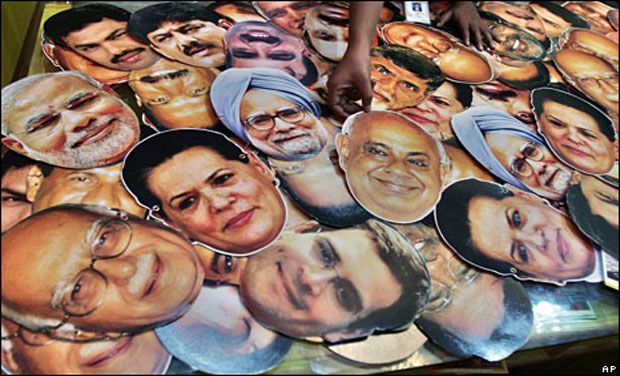
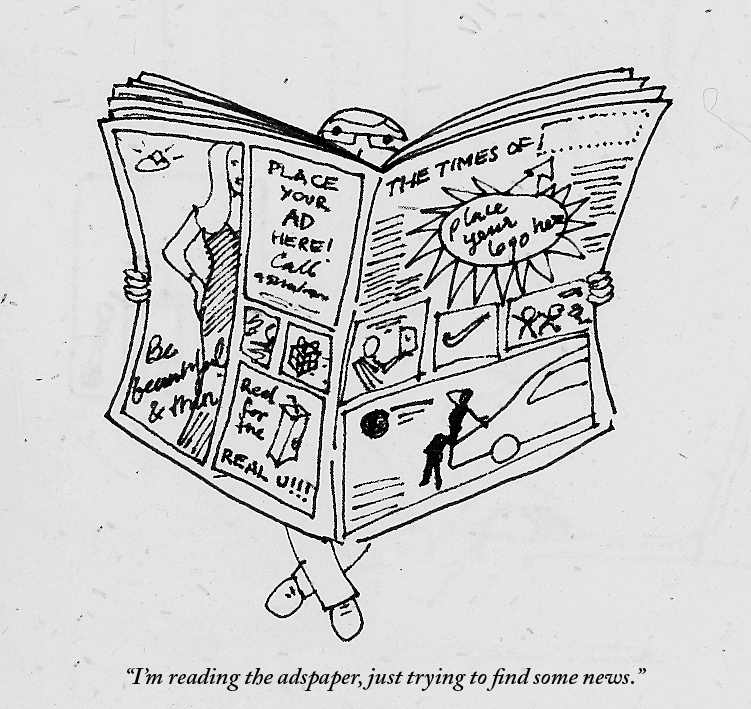

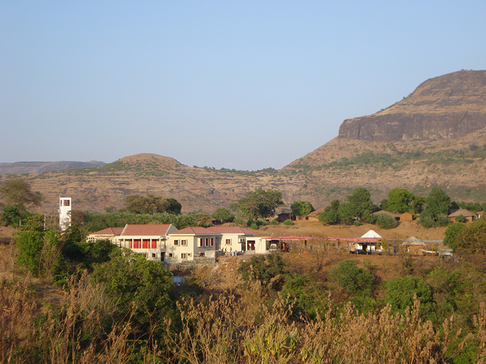
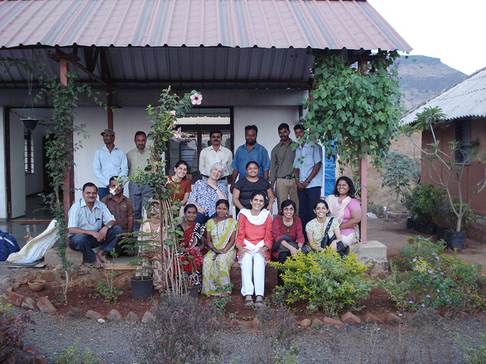
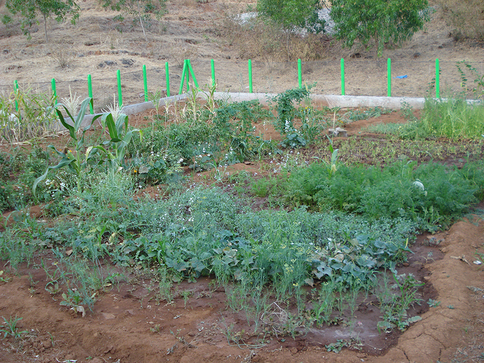
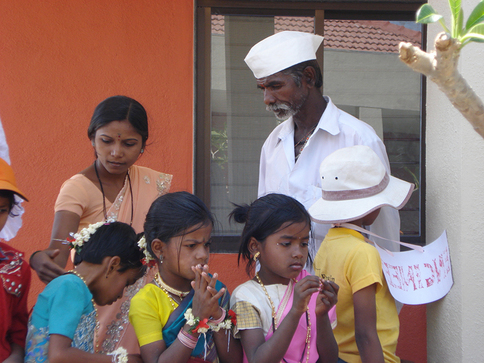
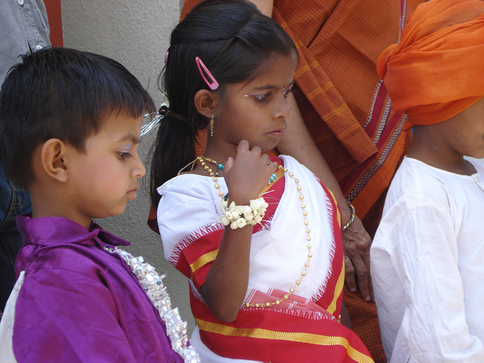
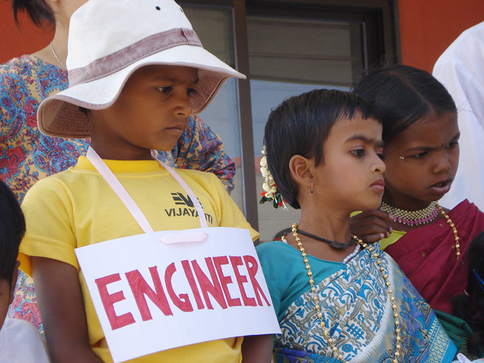
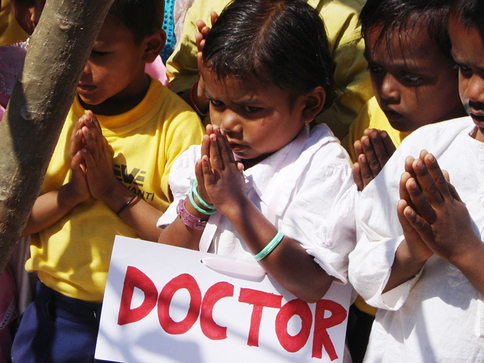
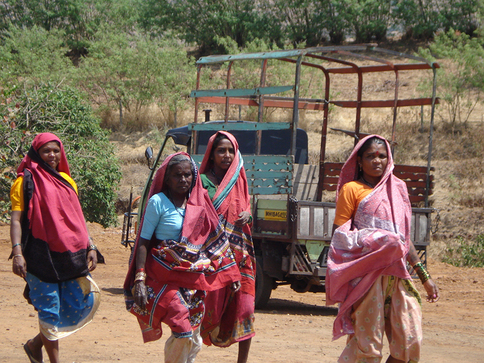
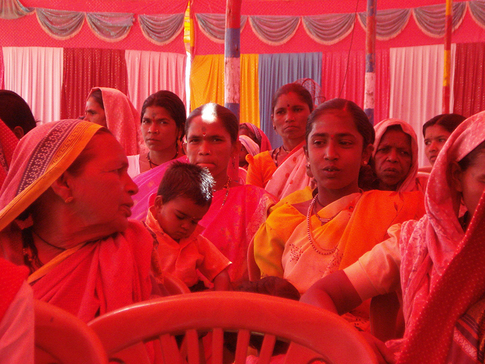
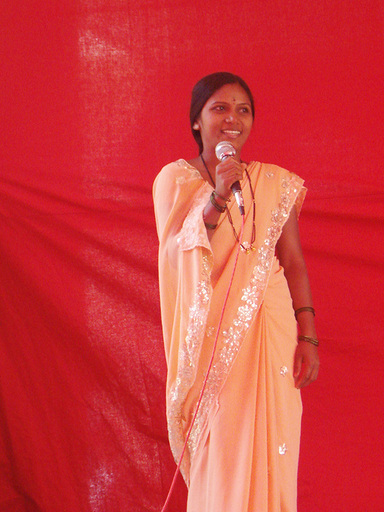
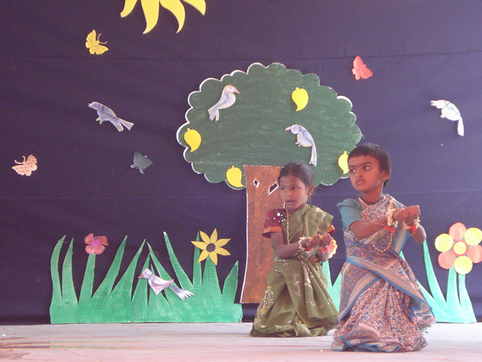
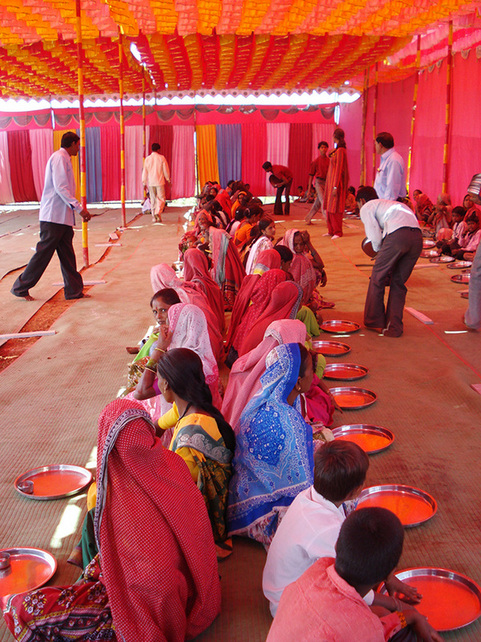
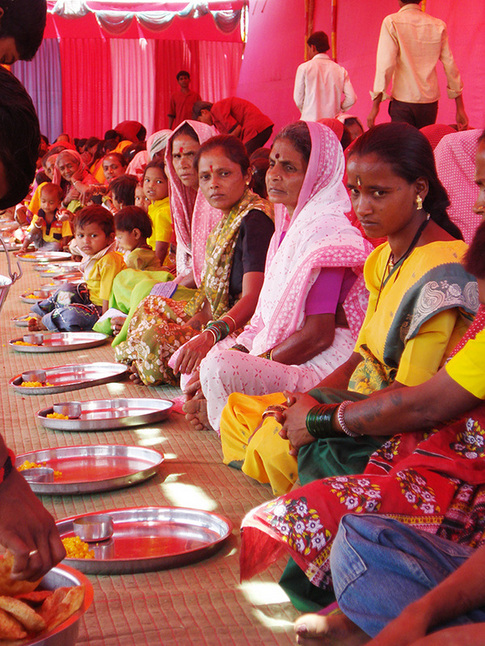
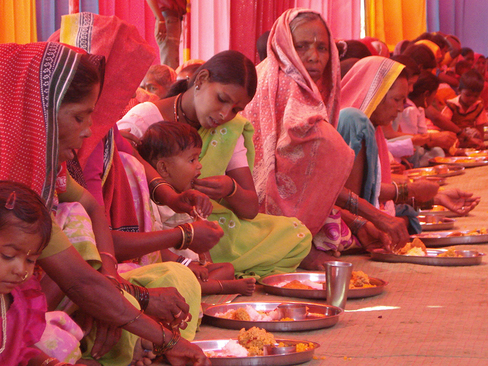
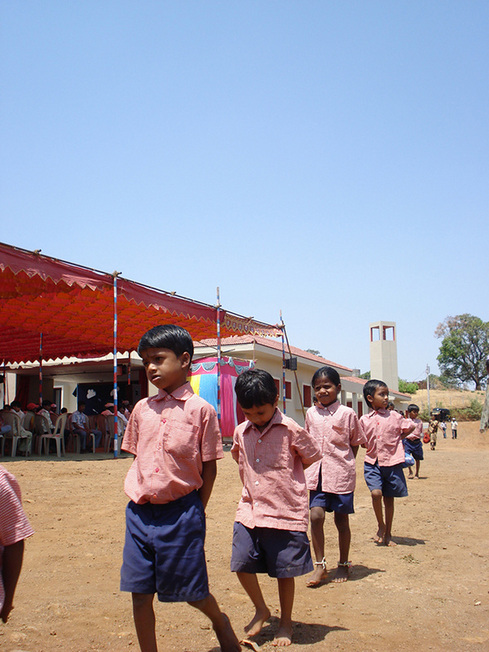
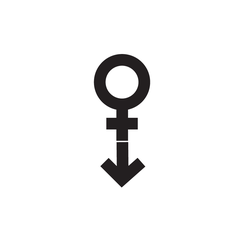
 RSS Feed
RSS Feed
